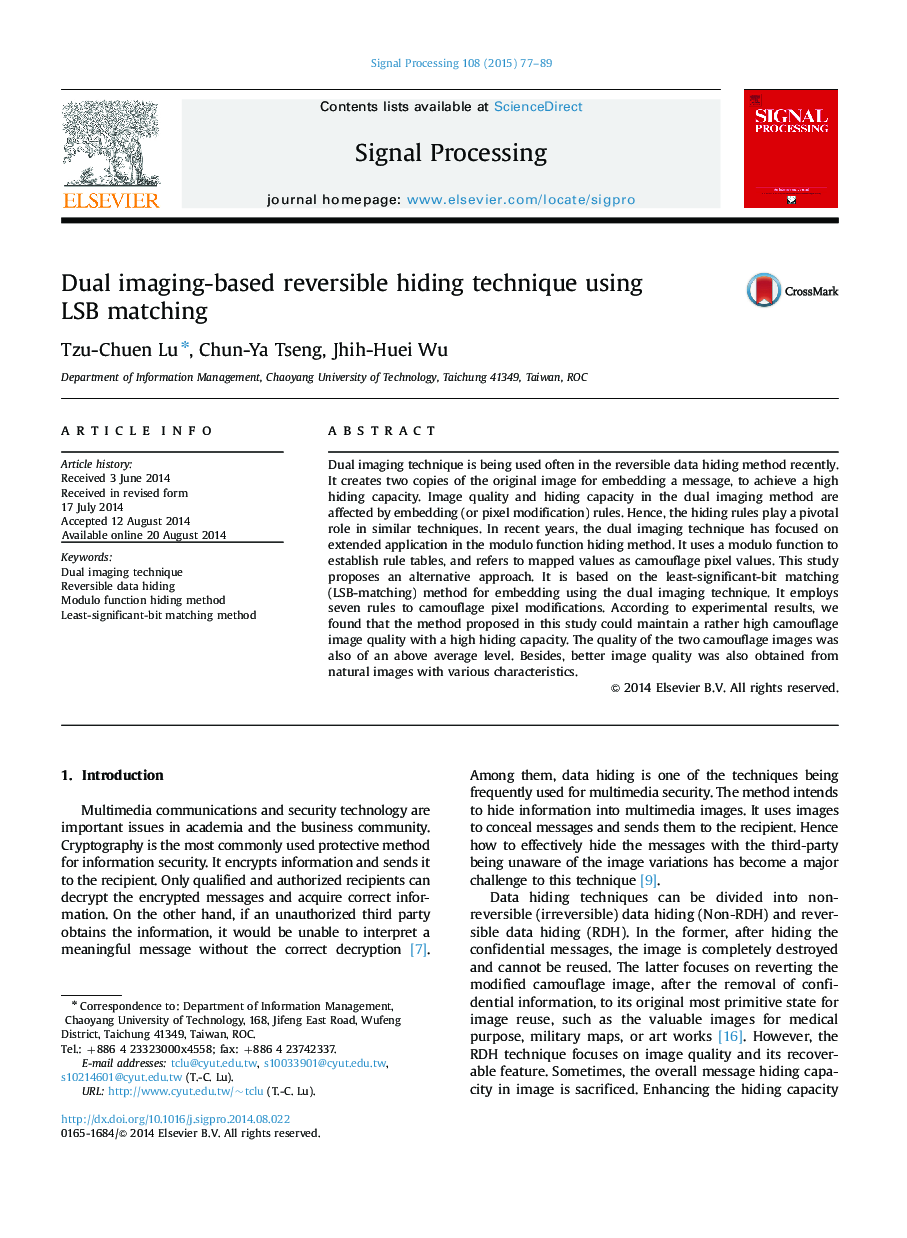| Article ID | Journal | Published Year | Pages | File Type |
|---|---|---|---|---|
| 6959488 | Signal Processing | 2015 | 13 Pages |
Abstract
Dual imaging technique is being used often in the reversible data hiding method recently. It creates two copies of the original image for embedding a message, to achieve a high hiding capacity. Image quality and hiding capacity in the dual imaging method are affected by embedding (or pixel modification) rules. Hence, the hiding rules play a pivotal role in similar techniques. In recent years, the dual imaging technique has focused on extended application in the modulo function hiding method. It uses a modulo function to establish rule tables, and refers to mapped values as camouflage pixel values. This study proposes an alternative approach. It is based on the least-significant-bit matching (LSB-matching) method for embedding using the dual imaging technique. It employs seven rules to camouflage pixel modifications. According to experimental results, we found that the method proposed in this study could maintain a rather high camouflage image quality with a high hiding capacity. The quality of the two camouflage images was also of an above average level. Besides, better image quality was also obtained from natural images with various characteristics.
Keywords
Related Topics
Physical Sciences and Engineering
Computer Science
Signal Processing
Authors
Tzu-Chuen Lu, Chun-Ya Tseng, Jhih-Huei Wu,
